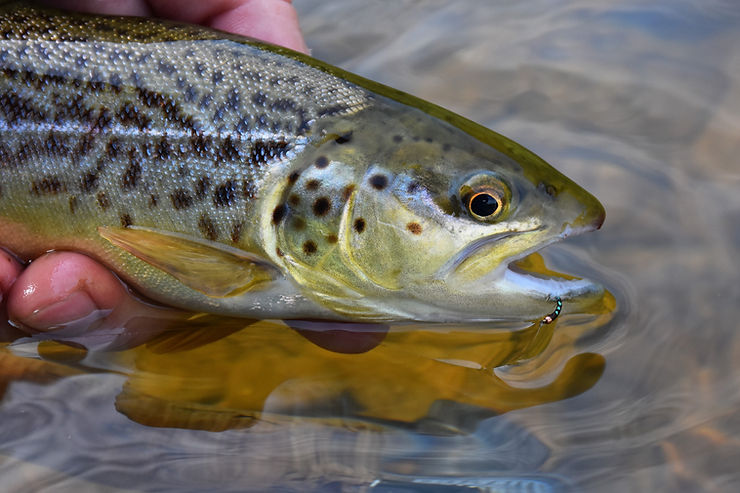4 Tips for Fishing with “No See Ums”

I can match almost any hatch, but the “no see ums” are the toughest of all. To me, the term “no see ums” describes any insects that are too small to see on the water without squinting until your eyes hurt. They can be midges, tiny terrestrials (such as ants), or any number of insects that range in size from 20 on down, and on many streams they make up a substantial portion of a trout’s diet.
Patterns that imitate these itty-bitty bugs aren’t exactly user friendly. Not only are they sometimes difficult to see, but they present certain challenges when it comes to actually hooking fish. So here are a few things I’ve learned over the years about trying to catch trout on “no see ums”:
1. Fish like an old guy.
One of my favorite fishing buddies is in his 70s, 30 years older than me, and he loves catching trout on small stuff on the Lehigh River and West Branch of the Delaware. He still loses the occasional fish, but he lands more than I do. When I asked him his secret, he said, “Set the hook like you’re my age instead of your age. Us older guys don’t have the quick reflexes that we used to, which is what you want when fishing flies this small.”

2. Use a medium-action fly rod.
These are much more forgiving for both casting and setting the hook than a stiffer, fast-action rod. The more whip-like medium-action acts as a buffer between you and the fly and makes it easier to apply pressure to play out the fish without worrying about ripping the fly out of the fish’s mouth or snapping the tippet on the hookset. This is true whether you’re fishing dry fly patterns or bottom-bouncing nymphs.
3. Lighten up.
Everyone has their opinion about what constitutes light tackle. I know and fish with several folks who think 5x is light, and in some instances it can be. But when I’m fishing small stuff, 7x-8x is my standard. Dropping down to these sizes does two things.
First, you get more action on the fly, even if you’re bottom-bouncing something like a Zebra Midge or Rainbow Killer. That little extra movement invariably results in more strikes.
And second, when fishing surface patterns such as the Mole Fly, heavier tippets leave a larger “footprint” and create more drag on the water’s surface. It’ll be almost impossible to get a natural drift.
4. Fish surface patterns in the film.
Most midges and “no see ums” aren’t strong enough to poke through the surface tension of the water, and they get caught in the film where they become easy prey for trout. One way to determine if this is the case is if you see just the trout’s back or dorsal fin break water as it feeds. Another way is when you see gentle swirls, sometimes nothing more than tiny ringlets, but the fish doesn’t actually break water.
If I’m having trouble seeing my fly on the water, I tie a large, easy-to-see pattern on first, then attach a two-foot section of tippet to the bend of the hook, and then tie the smaller fly to the end of that. This gives me a focal point so that even if I can’t see the fly, I at least know its general vicinity. And if the pattern is slightly subsurface, the dry serves as an indicator.
Even after implementing these tactics, don’t be surprised if you still lose more trout than you do with larger flies and heavier tippets. On the bright side, small flies can be really effective and result in more hookups anyway. The more you use them and get a feel for the limits of your tippet, your hookup-to-landed rate will go up.
Some people absolutely love fishing midges and “no see ums.” I’m not one of them, but I have found that the more I do it, the more I enjoy the challenge of catching trout on tiny flies. It’s finesse fly fishing at its finest.
Sign up for the Dark Skies Fly Fishing e-newsletter
It's free, delivered to your inbox approximately three times each month. Your information is always kept private and used for the sole purpose of keeping you up to date on blog posts and specials in the online store.
Sign Up Now